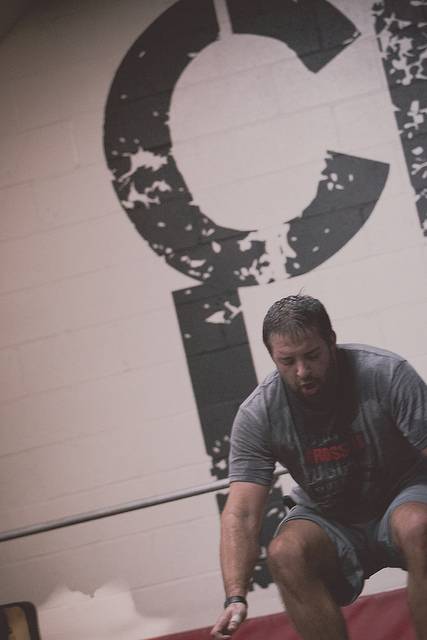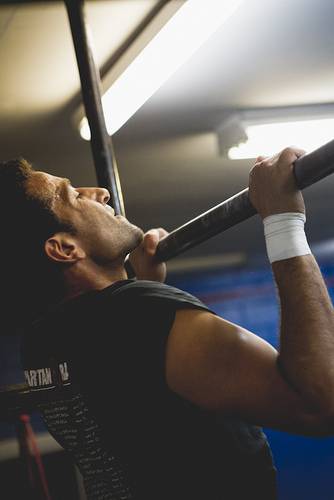Whenever the subject of injuries comes up, in a CrossFit environment, the most common response is, “all sports cause injuries.” This is true. The caveat is that, alone, of all athletic endeavors only CrossFit seems to have a hard time dealing with their injury profile. Sports should address the possible injuries and attempt to minimize them, understanding that an injury will halt progress and interfere with participation.
CrossFit is no longer an edgy alternative, limited to military types and the full sleeve tat crowd. It is becoming mainstream fitness with a twist, and it is going to be your responsibility, as a coach and gym owner, to implement CrossFit in a safe way, a way that is more in keeping with the needs of the people walking in your door – soccer moms, middle age business men and women, teens, kids, and seniors. Most of them don’t want to get hurt and therein lays the problem. There are still boxes opening with unskilled trainers clutching a handful of CF Certs believing blindly in the model and parroting things like, “If you’re afraid of getting hurt, we probably don’t want you in our ranks.” New people don’t want to get hurt and if you do hurt them they will probably leave your ranks.
Your mission, should you decide to accept it, is to challenge the client in your gym, get them stronger, and lead them on the path to mastery and competence without injuring them. A good trainer or gym owner should always use the “Return on Investment” strategy when selecting exercises. The criteria for excluding an exercise should be: possibility for failure, necessity for advanced motor skills, or a steep learning curve. If any one of these is present pick another exercise. It is also necessary to ascertain the client’s goals and then to teach them the safest and simplest exercise to achieve that end. Universal among CrossFit gyms is the idea that the workouts are universally scalable, but if the scaling is based on a lack of skill or strength then you have missed your mark. If the client does not have the skill or strength to do an exercise, then skill and strength should be the focus.
The following list of movements, by no means comprehensive, is the basis for a solid program. You will notice there are no Olympic lifts included in this list. It is unconscionable, irresponsible, and unnecessary to try to teach someone a snatch or clean if they cannot do a kettlebell swing or an air squat with good form. They will get a sense of using their hips explosively with the kettlebell swings and a sense of hip extension under load with the deadlift and squat movements.
WEIGHTED LIFTS
- Goblet squat
- Front squat
- Back squat
- Deadlift
- Press
- Bench press
BODY WEIGHT
- Pullups and variations (no kipping)
- Pushups and variations
- Dips and variations (preferably bar dips, paralette dips or box dips)
- Burpees (solid 6 count burpee, not a flop)
- Bodyweight squat
 Ring rows
Ring rows- Lunges (front and lateral)
WEIGHTED MOVEMENTS
- Kettlebell swings
- Triple extension kettlebell swing
- Turkish get up
- Farmer’s walk
MISC.
- Rowing
- Running
- Broad jump
- Bear crawl
- Jumping rope (singles are fine)
CORE
- Back extension
- Hanging leg raise
- Plank
- Ab wheel
Unlike other skill level charts there are no prescribed or recommended weights or times. The beginning level is just to establish motor skills and competency and to build the structural strength and integrity that will allow your clients to handle more advanced movement patterns. Although not specifically designed to prevent injury, CrossFit Invictus in San Diego divided their classes into the categories of fitness, performance and competition, which is a great idea. Invictus coach C.J. Martin had this to say about these levels.
Our Fitness program is comprised of fewer complex movements (no olympic lifts, muscle-ups, etc…) and higher reps performed with lower percentages of the athletes’ max load (no 1RM testing). The conditioning sessions will typically include fewer complex movements, which allows our athletes to work at a higher relative intensity than they would be able to do if they had to perform a complex movement for which they had not yet developed the skill. This program is ideal for an athlete with a body composition goal and no desire to compete in the sport of fitness.
Our Performance program uses a wider variety of movements, including complex movements such as the Olympic lifts. It is, in essence, our interpretation of traditional CrossFit. We train strength and skills, typically followed by a short, intense conditioning session that could be comprised of any number of weightlifting, gymnastics and cyclical bodyweight movements (like running, rowing, skipping rope, etc…). This is an optimal program for athletes who are looking to attain peak performance and enjoy learning new athletic skills.
Our Competition program is designed for those who have a goal of competing in the sport of fitness. There is a heavy emphasis placed on the Olympic lifts and foundational gymnastics movements. Overall, the program is less varied than our Performance program, and tailored more toward the specific needs of a CrossFit competitive athlete.
 Workouts would be structured with the weight portion being a stand-alone. There are several programs that could be slotted in here such as Wendler’s 5/3/1, Pavel’s Power To The People, Mark Rippetoe’s Starting Strength or some variation of Louie Simmon’s Westside Method.
Workouts would be structured with the weight portion being a stand-alone. There are several programs that could be slotted in here such as Wendler’s 5/3/1, Pavel’s Power To The People, Mark Rippetoe’s Starting Strength or some variation of Louie Simmon’s Westside Method.
The conditioning portion could include any type of push/pull work, any type of lower/middle/upper body work, and something from the miscellaneous section. The workouts would never be designed around fatiguing a single body part or joint movement. When you program a workout like that and add in a time element to push people you exponentially increase the chances of injuring your clients.
When programming conditioning workouts it is not ideal to crush your clients. Most programs designed to enhance a person’s physical fitness have clients leaving the gym feeling as though they have been worked, not as if they have been worked over.
A sample workout could look like this:
- Strength
- Squat 2 x 5
- Skills
- Goblet squats, pushups, and rowing
- WOD
- 3 rounds:
- Row 200 meters/10 pushups/5 goblet squats
You could time this for a CrossFit feel or allow 30 to 45 seconds rest between exercises and 60 seconds rest after each round. The warm-up and skills should be workout specific. This model will also leave you time for mobility work, cool down, and stretching.
In times of stress people will always fall back on their training. It is your job to make sure the training is solid before introducing stress. You want durable, solid people coming out of your gym – not an endless parade of the walking wounded. There are a large number of combinations that can be assembled from the above exercises and you should be able to keep people entertained for a good long time with this. And we all know that keeping the buggers entertained is what this is all about. (Just in case – that last bit was facetious.)
Photos provided by Miguel Tapia Images and CrossFit LA.






